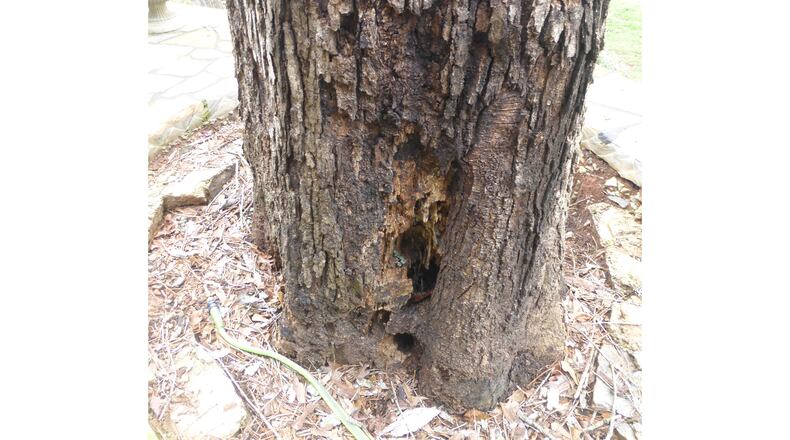Q: I have a large oak tree growing in a ring of stones in my rock patio. The ring has filled in with leaves and dirt over the years. When we removed the debris, some decay could be seen at the base in several spots. How do I treat the rotted areas to stop further damage? Randall Rust, Snellville
A: When you mention decay at the base of a tree standing close to your home, do not take the advice of a lowly scrivener like me. You desperately need a professional tree health assessor. Go to the website of the Georgia Arborist Association (georgiaarborist.org). Search the member directory using the key word “consultations.” Whomever you hire, make sure they have a current International Society of Arboriculture (ISA) certification number. This assures that you are hiring a trained professional. This is not a job you can delay. I predict that you will be told that the tree is unsound and should be removed. Contact one of the members of the GAA and get at least three bids for the job. Be sure the specifics of the job are spelled out and comparable. Also verify their coverage for liability and workers’ compensation insurance. Removing a tree near a home won’t be cheap. But imagine how much it would cost to remove a tree that falls on your house and to then also make repairs to the roof and interior. As the guy on TV says, “Git ‘er Done!”
Q: We have a 10-year-old hemlock tree. We noticed a few tiny white things at the base of the needles on some branches but not that many. I’m worried these could be hemlock woolly adelgid. The temperature got down to 1 degree Fahrenheit this past Christmas Eve. Would that have killed any insects on the tree? Bob Padgett, Epworth
A: Like all living things, hemlock woolly adelgid can be killed by cold temperatures. A high percentage of these sucking insects will die when temperatures drop to minus 4 degrees Fahrenheit, but some will survive. These individuals will be the basis of a big population surge in spring. I have details on how to control adelgids at bit.ly/GAadelgid.
Q: I have come into possession of several used aluminum truck toolboxes. I am contemplating making them into raised planters for vegetables and herbs. Can I grow plants in aluminum? Would it get too hot for the plants? David Burns, Cobb County
A: I foresee no problems. The aluminum sheet from which the toolboxes are made has a naturally deposited oxidized coating. This oxidation layer will prevent aluminum from leaching into the soil. You can paint the boxes a light color to prevent overheating.
Email Walter at georgiagardener@yahoo.com. Listen to his occasional garden comments on “Green and Growing with Ashley Frasca” Saturday mornings on 95.5 WSB. Visit his website, www.walterreeves.com, or join his Facebook Page at bit.ly/georgiagardener, for his latest tips.
About the Author
The Latest
Featured

